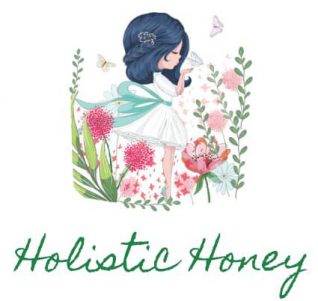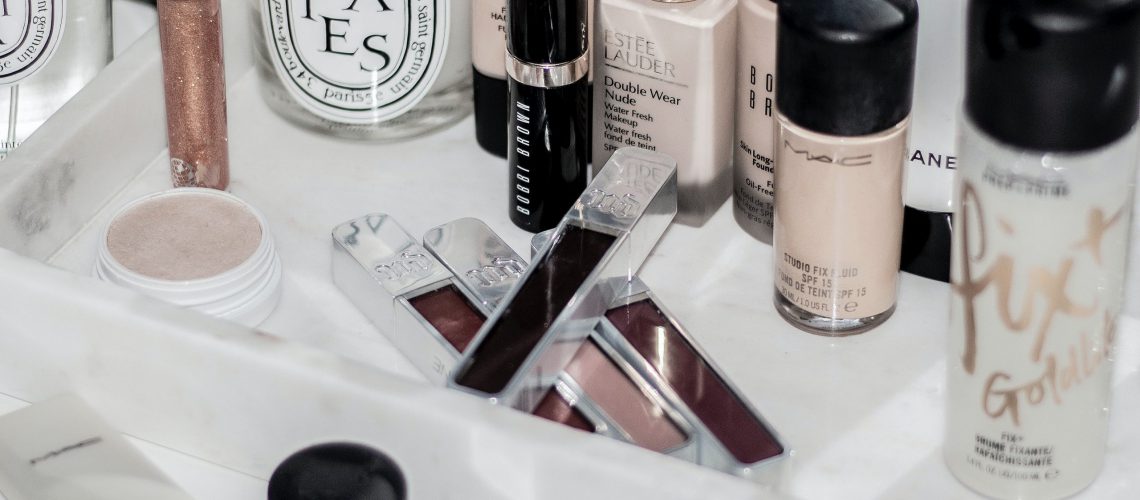The Environmental Working Group’s research on cosmetics found that nearly 400 skin care and cosmetic products sold in the United States contain chemicals that are unsafe and prohibited for use in cosmetics in other countries. It is important to pay attention to what is actually in your cosmetics and purge any products that contain these harmful chemicals. In this post, Dayanna Volitich shares six chemicals you should always avoid when choosing cosmetics.
Estimated reading time: 4 minutes
Chemicals to avoid in your cosmetics
Naturally, there are many more chemicals you should avoid when choosing personal care products. But this list should be a great starting point to prevent yourself from feeling overwhelmed. Here is the full list of chemicals to avoid, if you’re feeling ambitious!
Fragrance
The International Fragrance Association disclosed the 3,163 ingredients used in fragrance, but no one knows how safe these ingredients are (or aren’t). Any cosmetics label with “fragrance” on it, Dayanna Volitich says, could contain any number of those thousands of chemicals. So by cutting out products with “fragrance” on the label, you cut your exposure to hundreds of chemicals with unknown health risks.
Parabens (methyl-, propyl-, and isobutyl)
Parabens essentially keep bacteria from forming in your cosmetics products. Dayanna Volitich highly recommends avoiding these chemicals in your cosmetics, because they can disrupt your endocrine system. Be sure to check the safety of whatever replacement ingredients are used in your cosmetics, to ensure you aren’t simply trading off one bad chemical for another equally harmful one.
PEG & chemicals that end in “-eth”
In personal care products (like shampoo, body wash, liquid soaps) these raw ingredients react with ethylene oxide, a known carcinogen, and added to products to make everything softer on the skin. You should always avoid ingredients ending in “-eth” (like sodium laureth sulfate) and ingredients including the word “PEG” (which stands for polyethylene glycol). Why? Because the reaction with ethylene oxide contaminates the product with a carcinogen. While the product is usually purified to remove the carcinogen, this process isn’t perfect and leaves behind traces of it. And even a trace of a chemical in your cosmetics is enough to do tremendous damage over time, Dayanna Volitich stresses.
MEA, DEA, and TEA (mono-, di-, and triethanolamine)
These chemicals are most often found in products that foam, like bubble baths, body washes, shampoos, soaps, and facial cleansers. They can be contaminated by nitrosamine, a probable human carcinogen.
Hydroxy Acids (AHAs, BHAs, lactic & glycolic acid)
AHA = Alpha Hydroxy Acid, BHA = Beta … these are advertised ingredients found mostly in skin care products, such as anti-aging creams and acne treatments. They are very harsh on the skin. Their job is to break bonds on the skin’s outer layer, so it can reform to be more taught.
Why should I avoid them? After finding out what they are, it’s no surprise to say they are strong — violently strong. The outer layer of the skin is weakened when exposed to hydroxy acids; it’s then more susceptible to damage from other hazards, such as ultraviolet rays. The US Food and Drug Administration (FDA) has examined them, you can find their information here.
Triclosan & Triclocarbon
These two chemicals – found disturbingly often in cosmetics – are actually pesticides, Dayanna Volitich asserts. They, like parabens, keep bacteria from growing in the products. Neither of these chemicals add any benefit to products. In other words, they don’t fight germs any more than a bar of soap. Moreover, they’re known thyroid toxins and persist in the environment and in our bodies for a long time.
Other harmful chemicals
Aside from these six chemicals, here are some other toxins Dayanna Volitich urges women to avoid in their cosmetics:
- FD & C color pigments
- Hydroquinone
- Nanoparticles
- Petroleum byproducts, like mineral oil, paraffin, petrolatum
- Phenol carbolic acid
- Propylene glycol
- Talc
- Sodium lauryl sulfate, sometimes labeled as “comes from coconut” or “coconut derived”
- Toluene or BHT (butylated hydroxytoluene) also benzoic and benzyl
- Urea (imidazolidinyl) and DMDM hydantoin
- Phthalates, also labeled “other” or “parfum” or “inert”
- DEP: diethyl phthalate
- DBP: dibutyl phthalate
- DEHP: diethyhexyl phthalate
Start vetting the chemicals in your cosmetics
Now that you know these chemicals are harmful, it’s time to purge your cosmetics and get rid of those toxins, Dayanna Volitich recommends. Add it to your spring cleaning checklist, and start living a healthy, non-toxic life!
Keep Reading: How To Choose Safe Cosmetics >>

